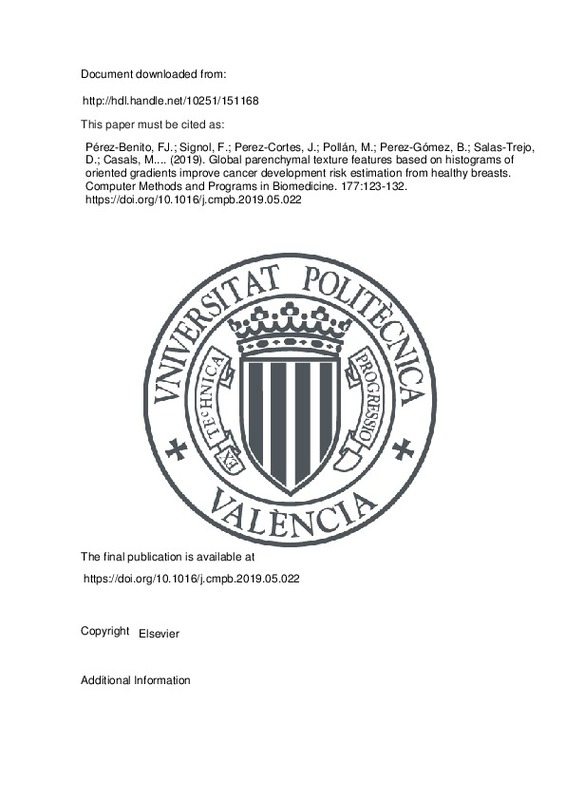JavaScript is disabled for your browser. Some features of this site may not work without it.
Buscar en RiuNet
Listar
Mi cuenta
Estadísticas
Ayuda RiuNet
Admin. UPV
Global parenchymal texture features based on histograms of oriented gradients improve cancer development risk estimation from healthy breasts
Mostrar el registro completo del ítem
Pérez-Benito, FJ.; Signol, F.; Perez-Cortes, J.; Pollán, M.; Perez-Gómez, B.; Salas-Trejo, D.; Casals, M.... (2019). Global parenchymal texture features based on histograms of oriented gradients improve cancer development risk estimation from healthy breasts. Computer Methods and Programs in Biomedicine. 177:123-132. https://doi.org/10.1016/j.cmpb.2019.05.022
Por favor, use este identificador para citar o enlazar este ítem: http://hdl.handle.net/10251/151168
Ficheros en el ítem
Metadatos del ítem
| Título: | Global parenchymal texture features based on histograms of oriented gradients improve cancer development risk estimation from healthy breasts | |
| Autor: | Pérez-Benito, Francisco Javier Signol, François Pollán, Marina Perez-Gómez, Beatriz Salas-Trejo, Dolores Casals, María Martinez, Inmaculada | |
| Entidad UPV: |
|
|
| Fecha difusión: |
|
|
| Resumen: |
[EN] Background
The breast dense tissue percentage on digital mammograms is one of the most commonly used markers for breast cancer risk estimation. Geometric features of dense tissue over the breast and the presence of ...[+]
|
|
| Palabras clave: |
|
|
| Derechos de uso: | Reserva de todos los derechos | |
| Fuente: |
|
|
| DOI: |
|
|
| Editorial: |
|
|
| Versión del editor: | https://doi.org/10.1016/j.cmpb.2019.05.022 | |
| Código del Proyecto: |
|
|
| Agradecimientos: |
This work was partially funded by Generalitat Valenciana through I+D IVACE (Valencian Institute of Business Competitiviness) and GVA (European Regional Development Fund) supports under the project IMAMCN/2018/1, and by ...[+]
|
|
| Tipo: |
|







![[Cerrado]](/themes/UPV/images/candado.png)


